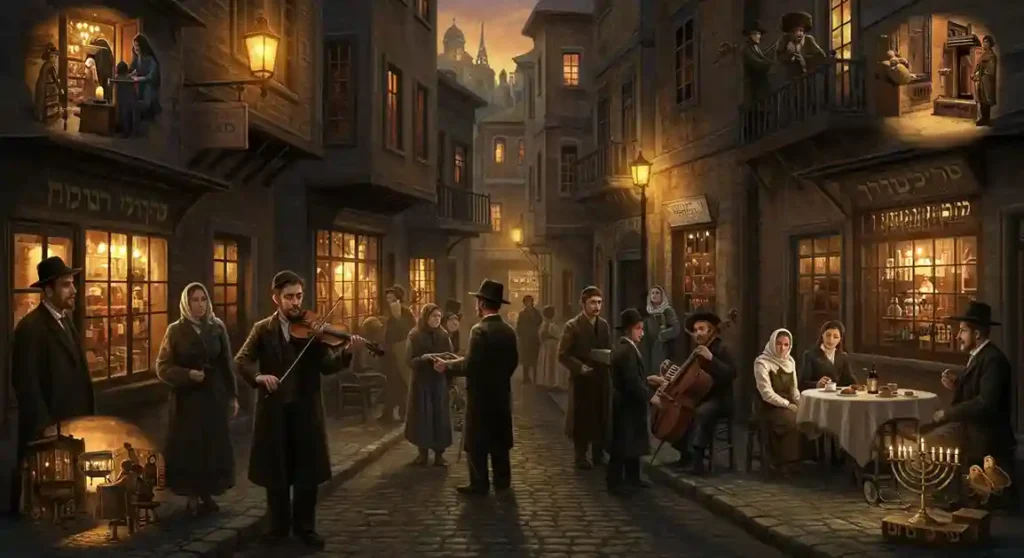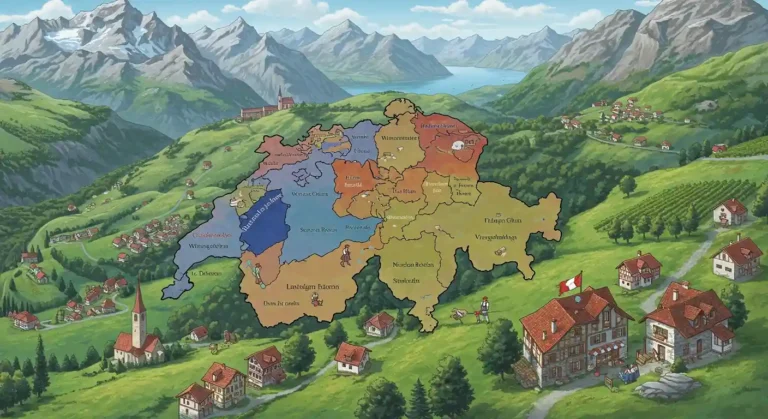When What Do They first started researching what language do Jews speak, they never expected a simple answer. Maybe Hebrew, right? But the reality surprised me. The Jewish community speaks dozens of languages across the world, and the answer depends on where they live and their cultural background.
This diversity reflects thousands of years of Jewish history. From ancient times to modern day, Jewish communities have adapted to their surroundings while maintaining their identity. We found this fascinating because it shows how language connects to both faith and daily life. At What Do They, we explore these linguistic questions across different cultures and communities.
In this post, What Do They will walk you through the main languages Jewish people speak. You’ll learn about Hebrew, Yiddish, Ladino, and the many other languages that shape Jewish communities worldwide.
Hebrew: The Ancient and Modern Language
Hebrew holds a special place in Jewish culture. It’s the language of the Torah, prayers, and religious texts that date back thousands of years. But here’s what makes Hebrew unique—it’s both an ancient language and a living, breathing modern language.
For centuries, Hebrew was primarily used for religious purposes. Jewish people around the world would pray in Hebrew, even if they spoke different languages at home. I think this is remarkable because it created a shared religious experience across continents.

Then something extraordinary happened in the late 1800s and early 1900s. Hebrew was revived as a spoken language. Today, it’s the official language of Israel, spoken by millions of people in everyday conversations. Parents speak it to their children. Students learn math and science in Hebrew. It’s used in restaurants, shops, and offices.
Modern Hebrew sounds different from the biblical version. New words have been created for things like “computer” and “smartphone.” The pronunciation has changed too. But the core remains connected to its ancient roots.
Yiddish: The Language of Eastern European Jews
What language do Jews speak in their daily lives? For millions of Eastern European Jews, the answer was Yiddish. This language developed around a thousand years ago in Central Europe, blending German with Hebrew, Aramaic, and Slavic languages.
Yiddish became the primary language for Jewish communities in Poland, Russia, Lithuania, and neighboring regions. It was the language of home, market, and community. People told jokes in Yiddish, sang lullabies, and wrote literature that captured the Jewish experience in Europe.

I’ve listened to Yiddish songs, and there’s something deeply emotional about them. The language carries history in every word. It reflects a world that was vibrant and full of life before the Holocaust.
Today, Yiddish is still spoken by some Hasidic and ultra-Orthodox Jewish communities. You’ll hear it in neighborhoods in New York, London, and Jerusalem. While fewer people speak it than before, efforts to preserve Yiddish continue through cultural organizations and educational programs.
The language has also given English many borrowed words. Terms like “schlep,” “kvetch,” and “chutzpah” all come from Yiddish.
Ladino: The Sephardic Jewish Language
While Yiddish developed in Eastern Europe, Ladino grew among Sephardic Jews in Spain and Portugal. Ladino, also called Judeo-Spanish, mixes medieval Spanish with Hebrew, Arabic, Turkish, and other languages.
When Jews were expelled from Spain in 1492, they took Ladino with them. Communities settled in the Ottoman Empire, North Africa, and other Mediterranean regions. They preserved their language for generations, passing it down through families.

Ladino sounds like old Spanish but with its own distinct character. I’ve heard recordings of Ladino music, and it creates a bridge between Spanish culture and Jewish tradition. The melodies are hauntingly beautiful.
Unfortunately, Ladino is now endangered. Fewer young people learn it as their first language. Holocaust losses and community migrations have contributed to its decline. But cultural organizations work to document and teach Ladino to new generations.
The language represents an important part of Jewish heritage. It tells the story of Sephardic Jews and their journey across centuries.
Aramaic: The Ancient Companion to Hebrew
Aramaic might not be the first answer when people ask what language do Jews speak, but it played a crucial role in Jewish history. Parts of the Talmud were written in Aramaic. Some Jewish prayers are still recited in this ancient language.
Jesus spoke Aramaic, which shows how widespread it was in the Middle East during that era. For centuries, it served as a lingua franca across the region. Jewish scholars used it for religious discussions and legal texts.

Today, very few people speak Aramaic as a daily language. Some Jewish communities in Kurdistan and Iraq historically used Jewish dialects of Aramaic. Most of these speakers have now passed away or migrated to Israel, where they switched to Hebrew.
But Aramaic hasn’t disappeared completely. Students of Jewish texts still study it to understand classical sources. The Kaddish prayer, recited in synagogues worldwide, is in Aramaic.
Languages Jewish People Speak Around the World
Jewish communities exist in nearly every country. This global presence means Jewish people speak the local languages wherever they live. Let me break down what this looks like in different regions.
North America
Most Jewish people in the United States and Canada speak English. It’s their primary language for work, school, and daily communication. Many also learn Hebrew for religious education and bar or bat mitzvah preparation.
Some Orthodox communities speak Yiddish at home. In neighborhoods like Williamsburg in Brooklyn, you’ll hear Yiddish on the streets. But English remains dominant for most North American Jews. Interestingly, other religious communities like the Amish also maintain unique language traditions while living in North America.
Europe
European Jews speak the languages of their countries—French in France, German in Germany, Russian in Russia. Many European Jewish communities were decimated during the Holocaust. The survivors and their descendants often speak the language of where they rebuilt their lives.
In Ireland, for example, Jewish communities primarily speak English, though the country has its own rich linguistic heritage with Irish Gaelic. Each European nation presents a unique linguistic landscape for its Jewish population.
Middle East and North Africa
Jews from Middle Eastern and North African countries historically spoke Judeo-Arabic dialects. These combined Arabic with Hebrew elements. Today, most of these communities have relocated to Israel, France, or other countries.
In Israel, immigrants from these regions brought their languages. Older generations might still speak Judeo-Arabic at home, while younger ones speak Hebrew.
Latin America
Jewish communities in Argentina, Brazil, and Mexico speak Spanish or Portuguese. These communities include descendants of immigrants from Europe and the Middle East. Hebrew is learned for religious purposes.
The Jewish population in Peru, for instance, speaks Spanish as their primary language, just like the rest of the country. If you’re curious about what language they speak in Peru, you’ll find that Spanish dominates, though indigenous languages like Quechua are also spoken.
Asia and Africa
Smaller Jewish communities exist in countries like India, Ethiopia, and China. They speak local languages—Hindi, Amharic, Mandarin—while maintaining their Jewish identity. Ethiopian Jews, when they moved to Israel, had to learn Hebrew after speaking Amharic for generations.
Why Jewish People Speak Different Languages
The diversity in what language do Jews speak comes from Jewish history. Unlike some religious groups concentrated in one region, Jewish communities spread across continents. This happened through both forced exile and voluntary migration.
Each community adapted to survive. They learned local languages to trade, work, and participate in society. But they also maintained Hebrew for prayer and religious study. This created a multilingual tradition.
Some Jewish languages developed as distinct dialects. They mixed Hebrew words with local languages, creating unique forms of communication. This helped communities maintain their identity while living among different cultures.
I find this linguistic diversity impressive. It shows resilience and adaptability. Jewish people preserved their traditions while embracing the languages around them.
The Role of Hebrew in Modern Jewish Life
No discussion about what language Jews speak would be complete without emphasizing Hebrew’s modern role. When Israel was established in 1948, Hebrew became the unifying language for immigrants from dozens of countries.
Jews arrived from Yemen, Morocco, Poland, Iraq, and everywhere in between. They spoke different languages and had different customs. Hebrew provided common ground. Schools taught in Hebrew. Government operated in Hebrew. Within a generation, Hebrew became the primary language for most Israelis.
Outside Israel, Hebrew education remains important in Jewish communities. Children attend Hebrew school. Adults study for conversational Hebrew or religious text study. The connection to Hebrew helps maintain ties to Jewish heritage and Israel.
Technology has made Hebrew more accessible. Apps, online courses, and digital resources help people learn from anywhere. This keeps the language alive and growing.
Preserving Endangered Jewish Languages
Many Jewish languages face extinction. Ladino speakers number in the thousands instead of millions. Judeo-Arabic dialects are rarely spoken by younger generations. Even Yiddish, which millions once spoke, has declined significantly.
Why does this matter? Languages carry culture, history, and unique ways of seeing the world. When a language disappears, we lose literature, songs, humor, and wisdom accumulated over centuries.
Organizations work to document these languages before the last speakers pass away. They record conversations, transcribe texts, and create educational materials. Universities offer courses in Yiddish and Ladino. Cultural festivals celebrate these linguistic traditions.
I believe preserving these languages honors the people who spoke them. It keeps their stories alive for future generations. Even if these languages aren’t widely spoken again, documentation ensures they won’t be forgotten.
The Answer to Jews Language
So, what language do Jews speak? The answer is beautifully complex. Hebrew serves as the religious and national language. Yiddish and Ladino represent important historical communities. And Jewish people speak English, Spanish, French, Russian, Arabic, and countless other languages depending on where they live.
This linguistic diversity reflects Jewish history—a story of diaspora, adaptation, and survival. It shows how communities maintained their identity while embracing new homes and cultures. Whether praying in Hebrew, conversing in English, or preserving Yiddish, Jewish people use language to connect past and present.
Understanding this helps us appreciate the richness of Jewish culture. It’s not one monolithic experience but a tapestry woven from many threads. Each language tells part of the story, and together they create a fuller picture of what it means to be Jewish in our diverse world.








Leave a Comment